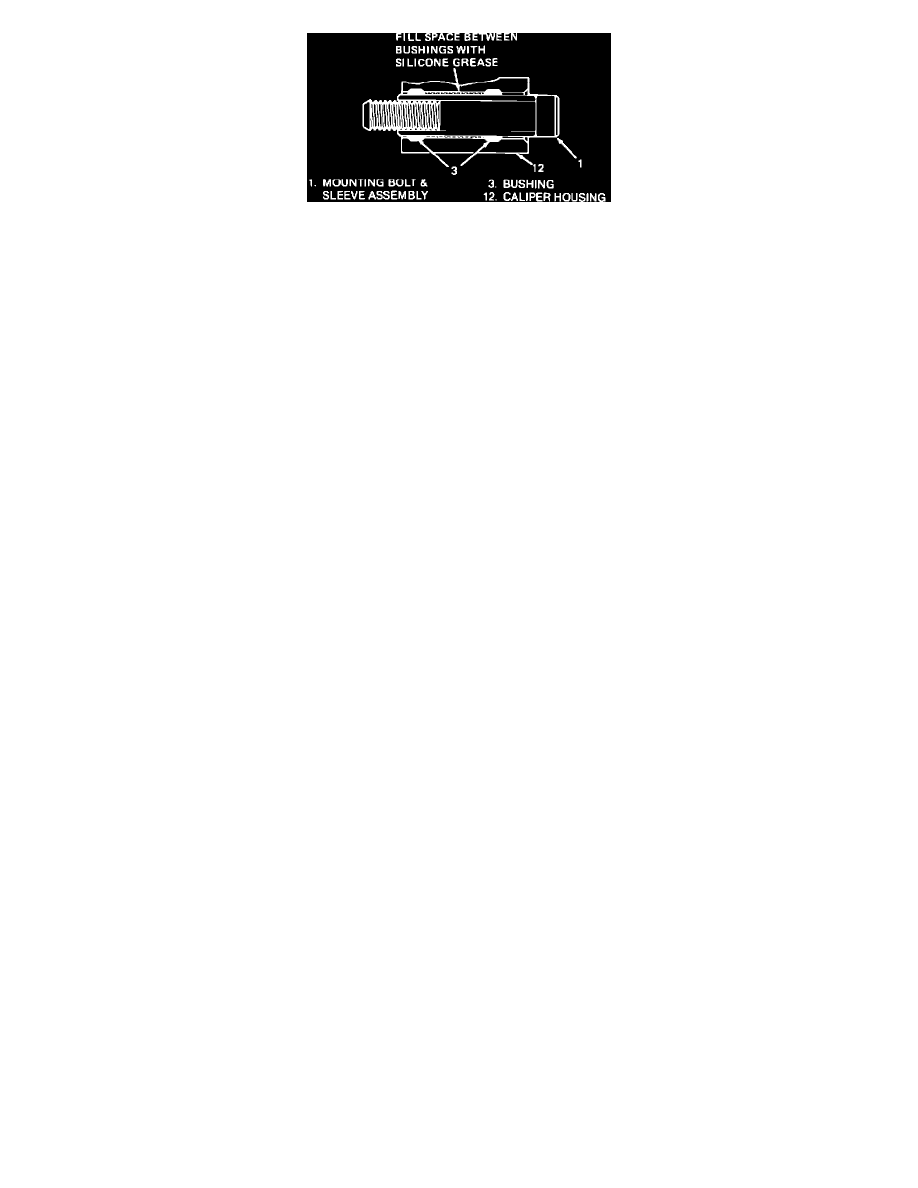Seville V8-273 4.5L (1989)

Figure 3 - Lubricating Caliper Cavity
2.
Caliper Drag - Disc brake pads (inboard and/or outboard) must drag sufficiently to contact high spots on the rotor when brakes are not applied.
Caliper drag is usually caused by interference between the caliper and the bracket stops on the steering knuckle or by binding of the caliber
mounting bolt sleeve bushings.
(Caliper-to-bracket stop clearance should be checked with calipers in position and the mounting bolts torqued to specification. Clearance measured
at the two locations shown in Figure 2 should be within specifications for the vehicle tested. If clearance is too great, the caliper may move and
cause a clunking noise when brakes are applied. If there is not enough clearance, the caliper may drag on the knuckle. Caliper bracket stops can be
filed to adjust clearance.)
When servicing calipers, caliper mounting bolts should be cleaned and inspected for corrosion. Always replace corroded mounting bolts; do not
attempt to polish away corrosion. To prevent binding, the mounting bolt sleeve bushings should be coated with silicone lubricant, P/N 12345579 or
equivalent. Refer to Figure 3. A light application of silicone lubricant should also be applied to the caliper bracket stops.
1989 DeVilles and Fleetwoods are equipped with a new caliper mounting bolt and sleeve bushing assembly that reduces the possibility of binding,
New parts are available for service of past model 1982-1988 Cimarrons, 1985-1988 DeVilles, and Fleetwoods as follows:
Carline
PN
DeVille, Fleetwood
18016163
Cimarron
18016164
Parts are currently available from GMSPO.
3.
Abrasive Lining Material - For uneven rotor wear to occur, shoe lining material must be abrasive enough to cause wear while rubbing against rotor
high spots. Some types of brake lining material are more abrasive than others. The more abrasive the material, the more quickly wear will occur
when rotor high spots contact the lining.
Product Engineering selects the type of brake lining material to be used based on the friction coefficient requirements of a particular vehicle.
Brake linings and other components should be replaced only with the parts recommended in the GMSPO parts catalog or the latest service
bulletin.
Diagnosis
DIAGNOSIS
Test Drive:
Before any diagnosis is performed, it is essential that the vehicle be road tested to determine the exact nature of the problem and to get a feel for the
vehicle vibration characteristics. The road test is used to determine whether brake pulsation is present or whether the vibration is due to some other cause
(tire and wheel vibration/balance, bent or out-of-round wheel rims, drivetrain, etc.).
When a brake pulsation condition is confirmed, a road test will determine whether the front or rear brakes are the cause.
If vibration/roughness is determined to be from a source other than brakes, perform necessary repairs.
Brakes should be tested while driving on a dry, clean and a reasonably smooth road surface. Rear brake pulsation is more easily isolated. When rear
brake pulsation has been eliminated or repaired, a full brake system test can be used to diagnose front brake pulsation. Begin by testing the rear brakes as
follows:
Rear Brake Pulsation Test:
1.
Accelerate to approximately 20 mph.
2.
Place gear selector in neutral.
